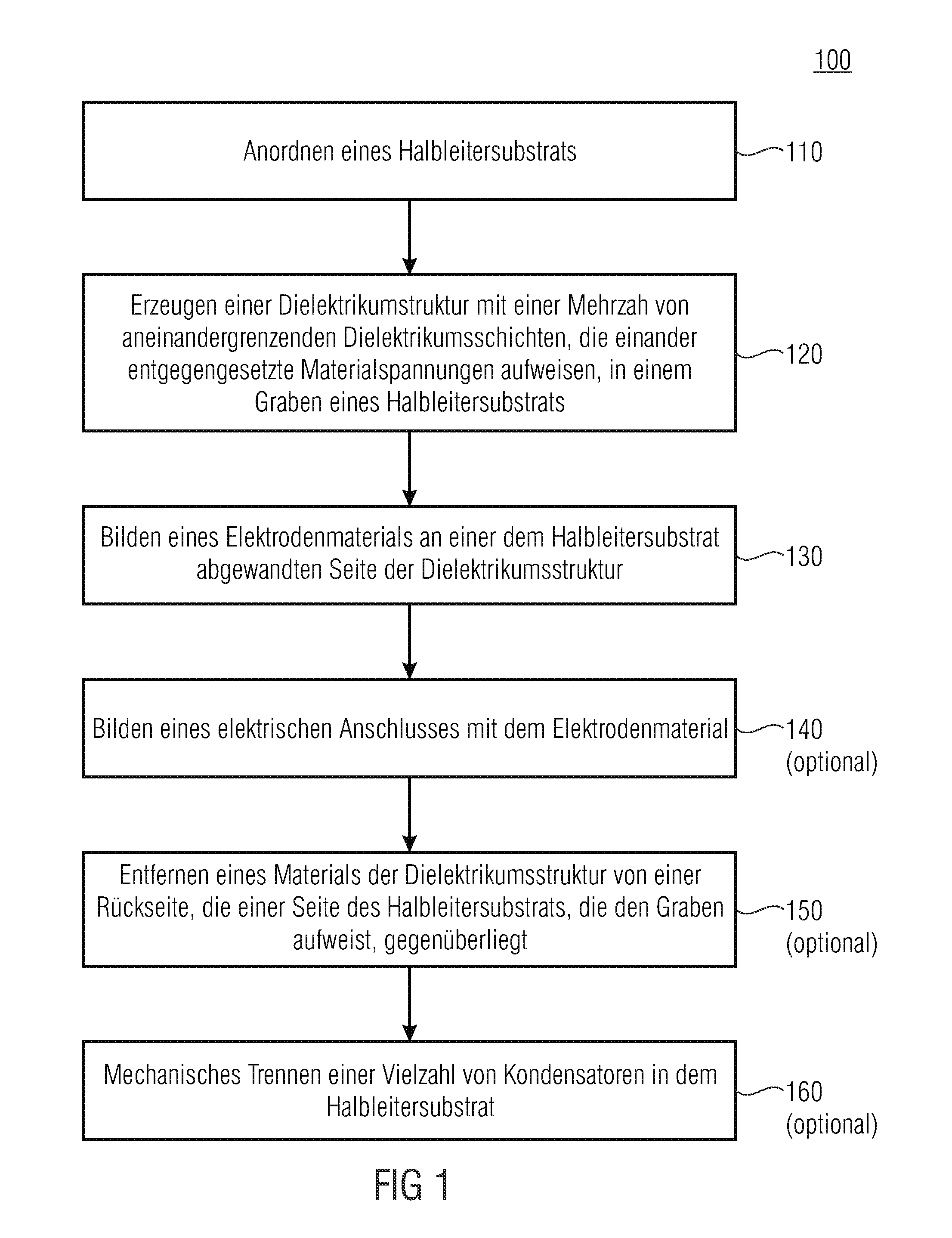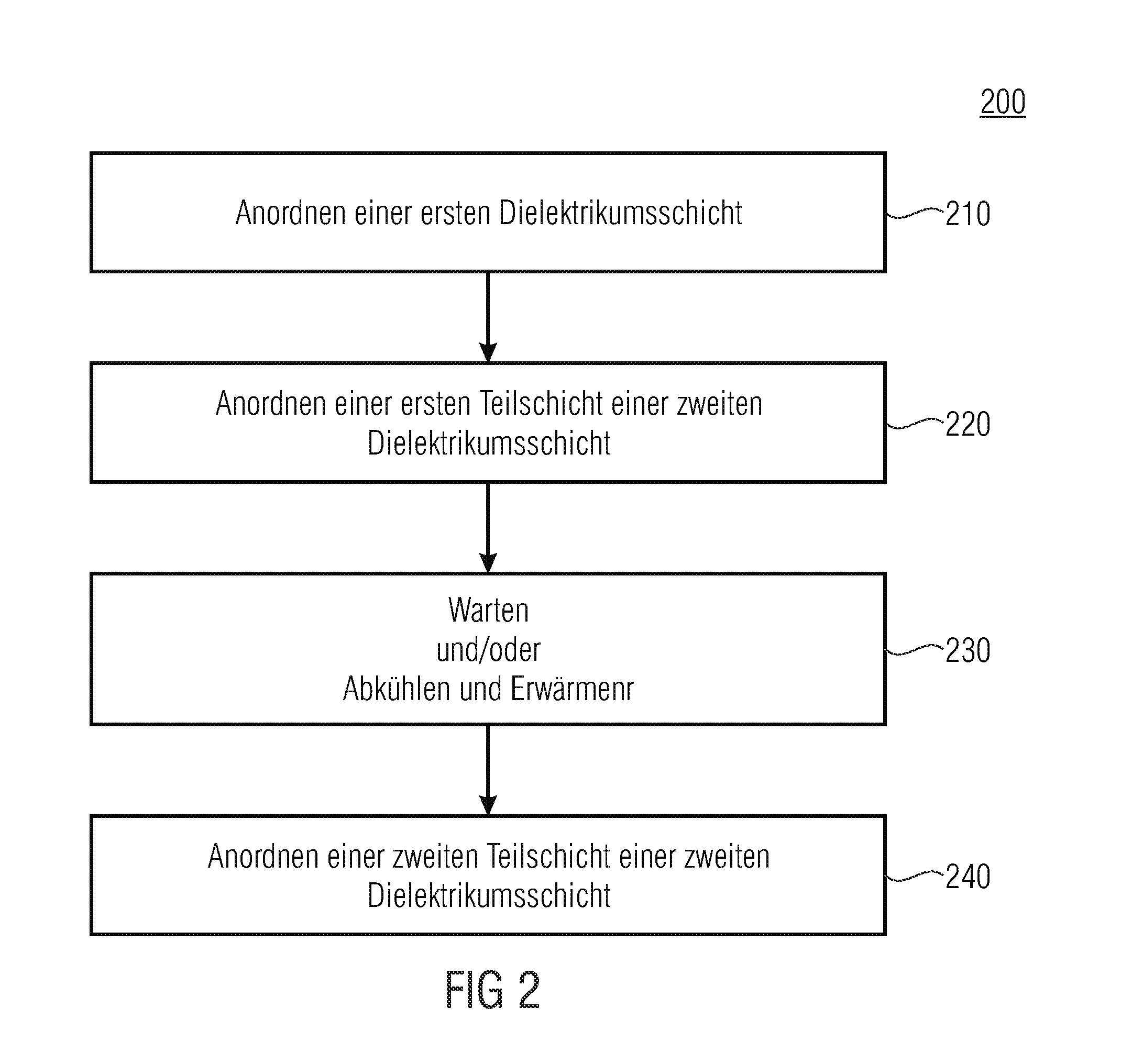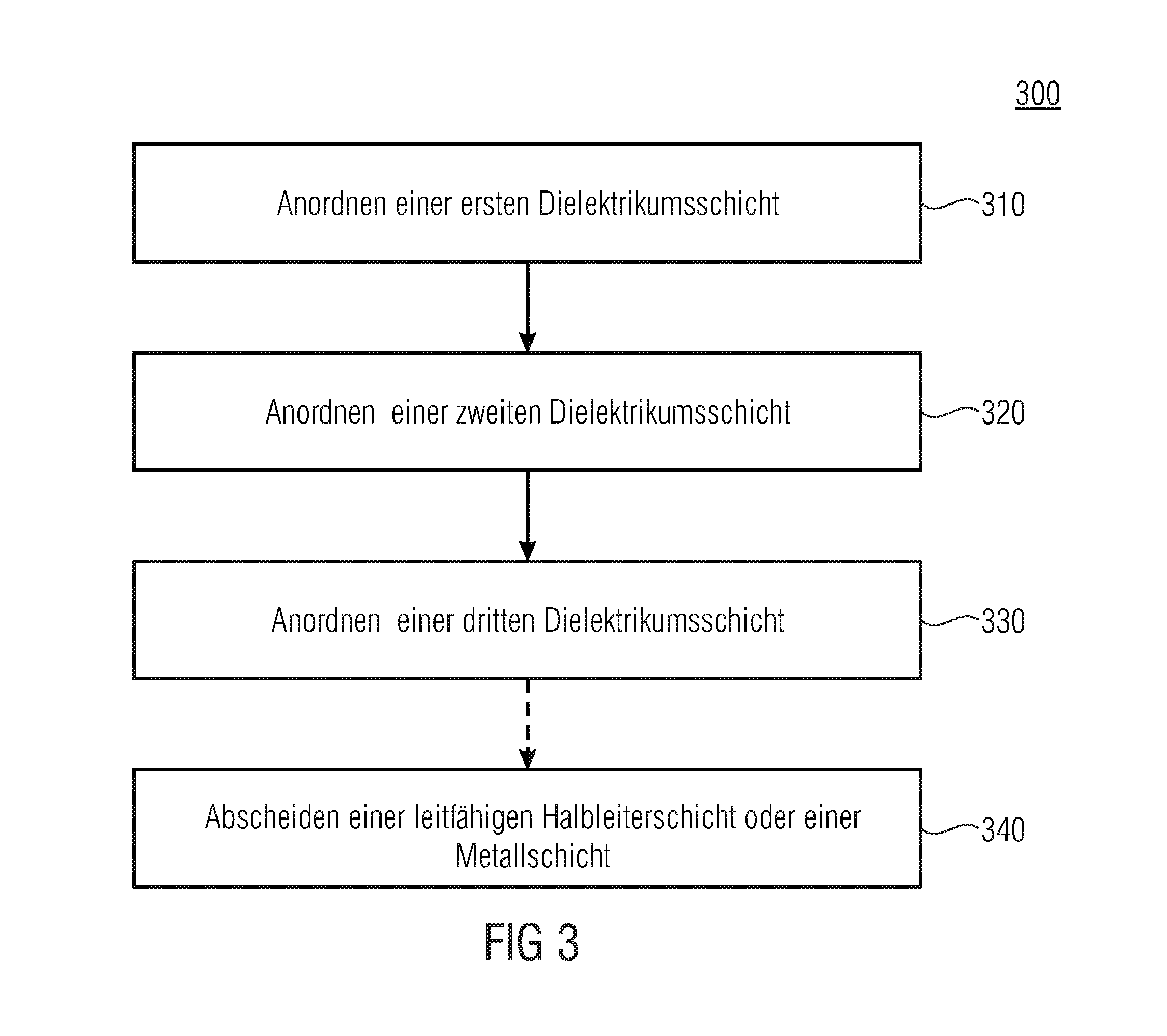Unknown
a technology of capacitors and dielectric structures, applied in the field of capacitors, can solve the problems of increasing the bending of the disk, the bending of the semiconductor disk, and the increase of the cost per device approximately linearly to the increasing chip surface, so as to reduce reduce the effect of bending or preventing the propagation of defects
- Summary
- Abstract
- Description
- Claims
- Application Information
AI Technical Summary
Benefits of technology
Problems solved by technology
Method used
Image
Examples
Embodiment Construction
[0045]Before embodiments of the present invention will be discussed in detail based on the drawing, it should be noted that identical, functionally identical or equivalent elements, objects and / or structures in the different figures are provided with the same reference numbers, so that the description of these elements illustrated in different embodiments can be interchanged or can be applied to one another.
[0046]In the following, reference is made to intrinsic and thermal material tensions Δ. Thermal material tensions Δ are explained such that based on positive coefficients of thermal expansion α materials shrink with respect to an adjacent layer and / or a (semiconductor) substrate during cooling. It is obvious that heating can result in an expansion. Further, the following statements can also be understood such that materials perform a negligible deformation during heating or cooling, i.e., the coefficient of expansion is approximately zero. Alternatively, the coefficient of therma...
PUM
 Login to View More
Login to View More Abstract
Description
Claims
Application Information
 Login to View More
Login to View More - R&D
- Intellectual Property
- Life Sciences
- Materials
- Tech Scout
- Unparalleled Data Quality
- Higher Quality Content
- 60% Fewer Hallucinations
Browse by: Latest US Patents, China's latest patents, Technical Efficacy Thesaurus, Application Domain, Technology Topic, Popular Technical Reports.
© 2025 PatSnap. All rights reserved.Legal|Privacy policy|Modern Slavery Act Transparency Statement|Sitemap|About US| Contact US: help@patsnap.com



